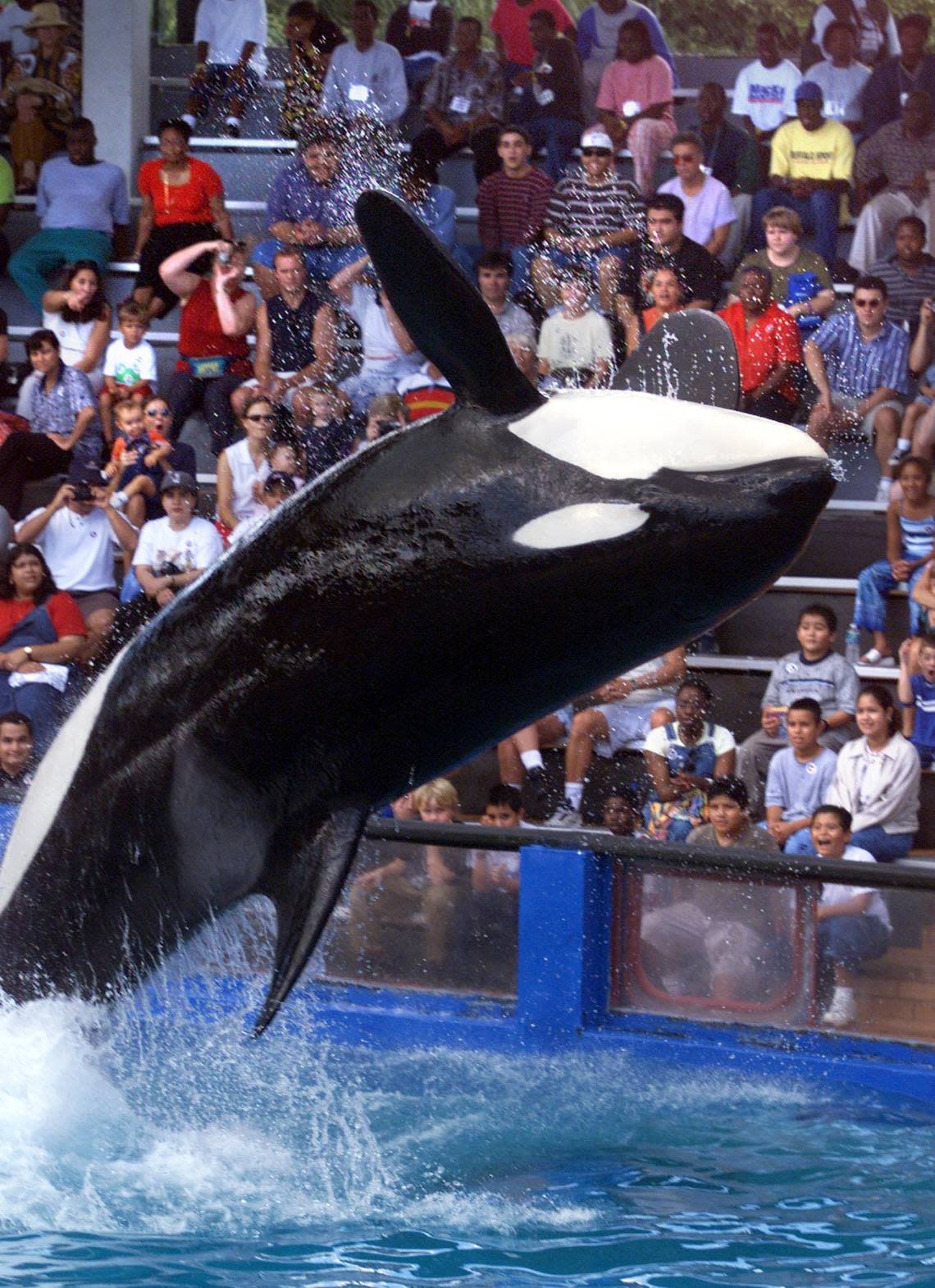Before she died, Lolita’s former vets and trainers raised issues about her Seaquarium care
Lolita’s former veterinarians and trainers say inadequate care and feeding of the 57-year-old orca may have contributed to her death at Miami Seaquarium in the small tank that was her home for 53 years.
Seaquarium officials disputed the criticism and insisted Lolita received round-the-clock medical attention and optimal nutrition.
Lolita, known by her Native American name of Tokitae and nickname of Toki, died Friday from kidney failure. The 7,000-pound killer whale had been Seaquarium’s main attraction for more than half a century, performing jumps and tricks and splashing Whale Bowl spectators. Toki stopped doing shows in late 2021 when she became severely ill with pneumonia.
READ MORE: Lolita, the Miami Seaquarium orca, died Friday as hopes grew she would leave for the sea
She was retired in 2022 but remained in her 20-foot deep, by 35-foot wide, by 80-foot long tank with dolphin companion Li’i while the aging Whale Bowl was declared unsafe and closed to the public.
“We’ve been saying for a long time they’re going to kill her at Seaquarium,” said Dr. Jenna Wallace, a former Seaquarium vet who suspects Toki had been suffering from dehydration since her diet was reduced two years ago. “We’ve been fighting so hard to get her the best treatment and get her out of there, but nobody listened. It shouldn’t have ended like this. She deserved better.”
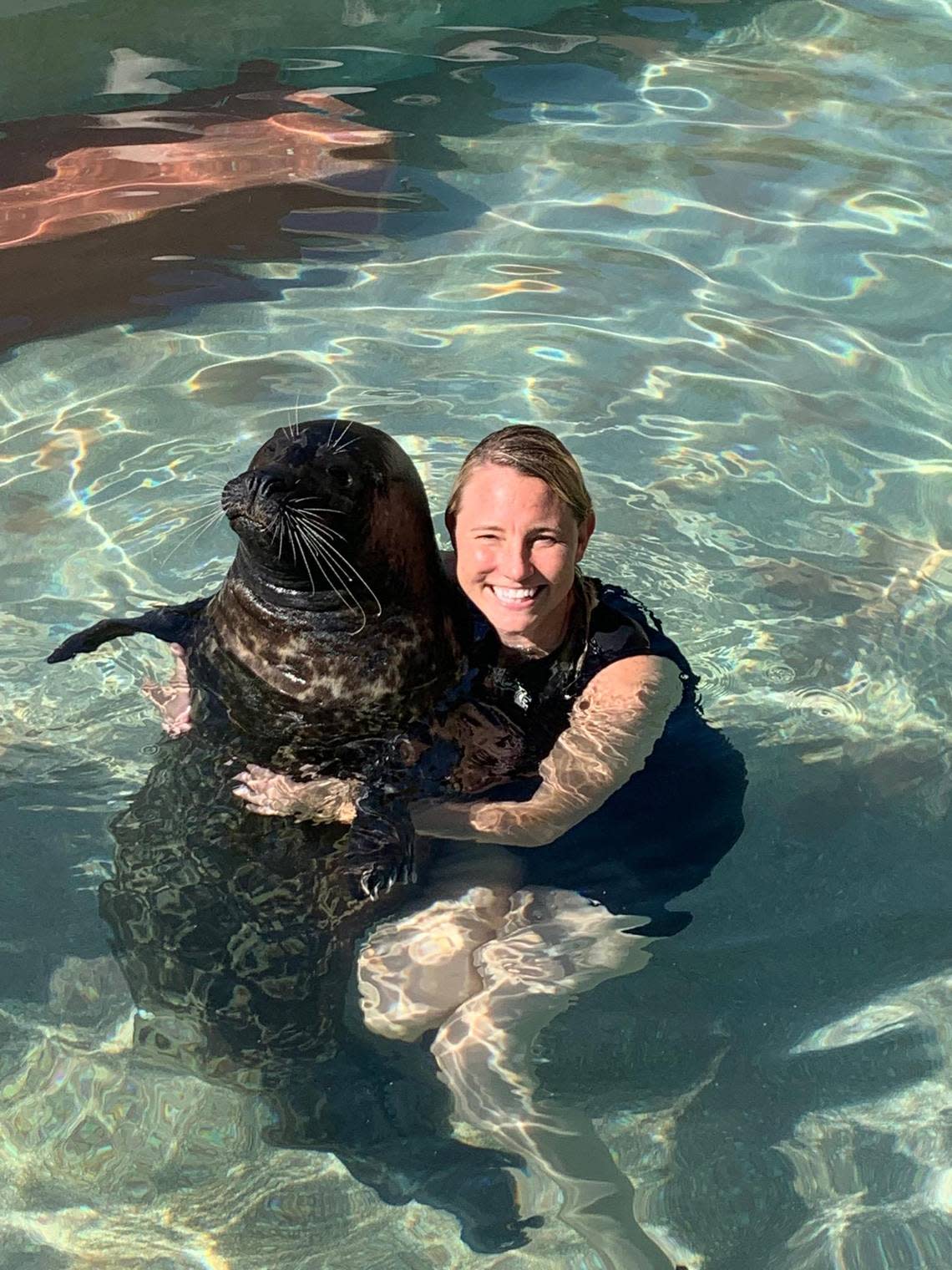
Toki’s attending veterinarian, Dr. Tom Reidarson, who was collaborating with the nonprofit Friends of to Toki to prepare her for a proposed cross-country move, said the ailing and elderly orca’s health had been improving until the sudden onset of kidney problems 72 hours before her death.
“I think it’s best to see what the evidence from the necropsy tells us,” he said. “I believe in the truth, not unfair accusations. I am deeply saddened by the loss of Toki. I knew her well and we gave her the highest standard of care. Now is not the time to throw stones.”
Seaquarium’s owners defended Toki’s care and feeding in a statement to the Herald Thursday evening: “Toki’s diet had been rich in nutrients and appropriate for her appetite and the amount of exercise she was engaged in since she retired from daily educational programs. This is reported by independent health and welfare assessments by the world’s foremost experts in marine mammal care, highly esteemed veterinarians respected throughout the global animal welfare community.”
READ MORE: After her death in a Miami tank, push to send Lolita home to the Pacific continues
Seaquarium had been planning to move her
Toki died just as an elaborate plan to move her was taking shape and attracting donors. The Dolphin Company, Seaquarium’s owner, and the Friends of Toki, a non-profit group founded by Keys real estate developer Pritam Singh, announced an agreement in March to transport Toki to a sea pen in her native ocean waters, where she was captured from Puget Sound’s L pod in 1970 when she was about 4 years old.
The plan was controversial. A group led by former trainers called Truth4Toki warned that a stressful move to an unfamiliar place after 53 years of dependency on humans was too dangerous for the whale, given her advanced age and health problems. They advocated for Toki to be removed from Seaquarium and relocated to SeaWorld in Orlando, where she could spend her last years in a much larger facility.
Given its record, Seaquarium should be shut down, said Marni Wood, co-founder of Truth4Toki and former head trainer at Seaquarium who worked with Toki until 2018. Two federal inspection reports critical of animal treatment have been issued since 2021. Both cited poor nutrition, and the 2022 report said nine dolphins were underfed as a form of punishment. The Virginia Key marine park, which opened in 1955 and hosted “Flipper” shows in the 1960s, has been under investigation by the U.S. Department of Agriculture. The federal agency regulates animal attractions and enforces the Animal Welfare Act of 1966.
“I loved that place but it doesn’t exist anymore,” said Marni Wood, who worked at Seaquarium for 15 years and was manager of animal training for 10 years. She left five years ago for another job in animal management.
“What breaks my heart is that Toki died surrounded by strangers,” she added. “They were the ones making all the decisions for this cockamamie plan to move her to Washington, which in reality was just a publicity stunt to raise money.”
READ MORE: Lolita the killer whale is remembered by her favorite humans. ‘She’s swimming free’
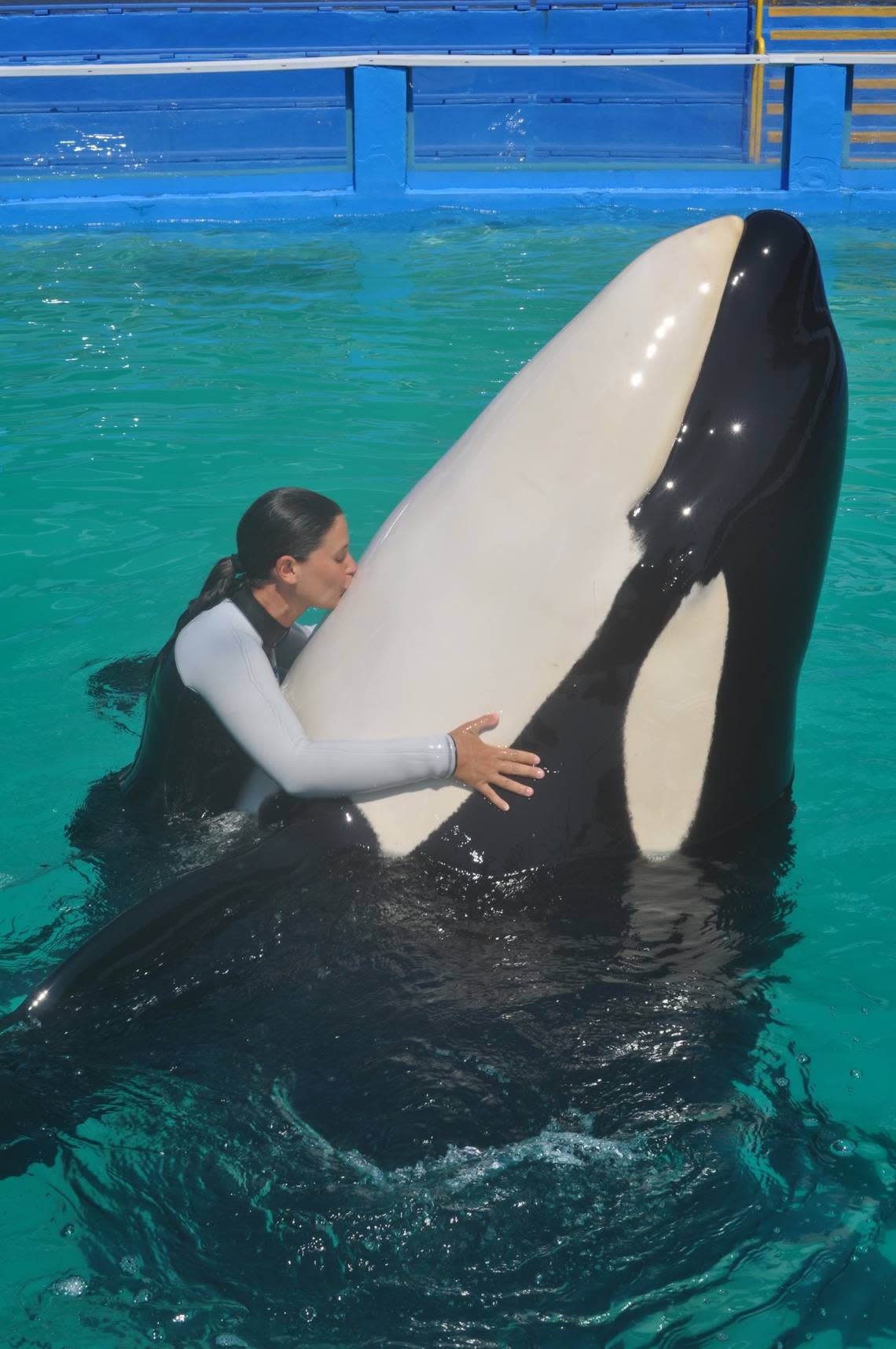
Fish intake was cut back
A cut in Toki’s daily diet starting two years ago was likely a factor in her death from renal failure, said Wood, Wallace and Toki’s former vet of 23 years, Dr. Magdalena Rodriguez. Toki’s food intake was reduced from 160-165 pounds of fish per day to 120 pounds because Seaquarium’s new curator and head trainer at the time decided Toki was too fat.
“Her food is where she gets her water and she wasn’t getting enough water,” Wallace said. “She had pre-existing renal disease, and she had elevated kidney enzymes in 2021, exacerbated by a decrease in her diet. When cetaceans become dehydrated, they can also become prone to illnesses such as pneumonia. I suspect she was chronically underfed and dehydrated over the last two years and never fully recovered and had the appetite she had previously.”
After her food intake was reduced, the orca began acting aggressively, and she accidentally killed Catalina, the Pacific white-sided dolphin that was her companion, by ramming her.
“Our new curator and head trainer said Toki looked like a stuffed pig,” said Wallace, who has been a key whistle-blower witness for the USDA. “Here’s a killer whale in a bathtub. She’s hungry and thirsty and confused. Something will go wrong.”
Seaquarium: Lolita was ‘eating well’
The change in diet was approved over the objections of Rodriguez. She and Wallace cooperated with USDA inspectors who were on site in 2021, noting dirty water, rotten fish and poor maintenance. The two vets were fired soon after.
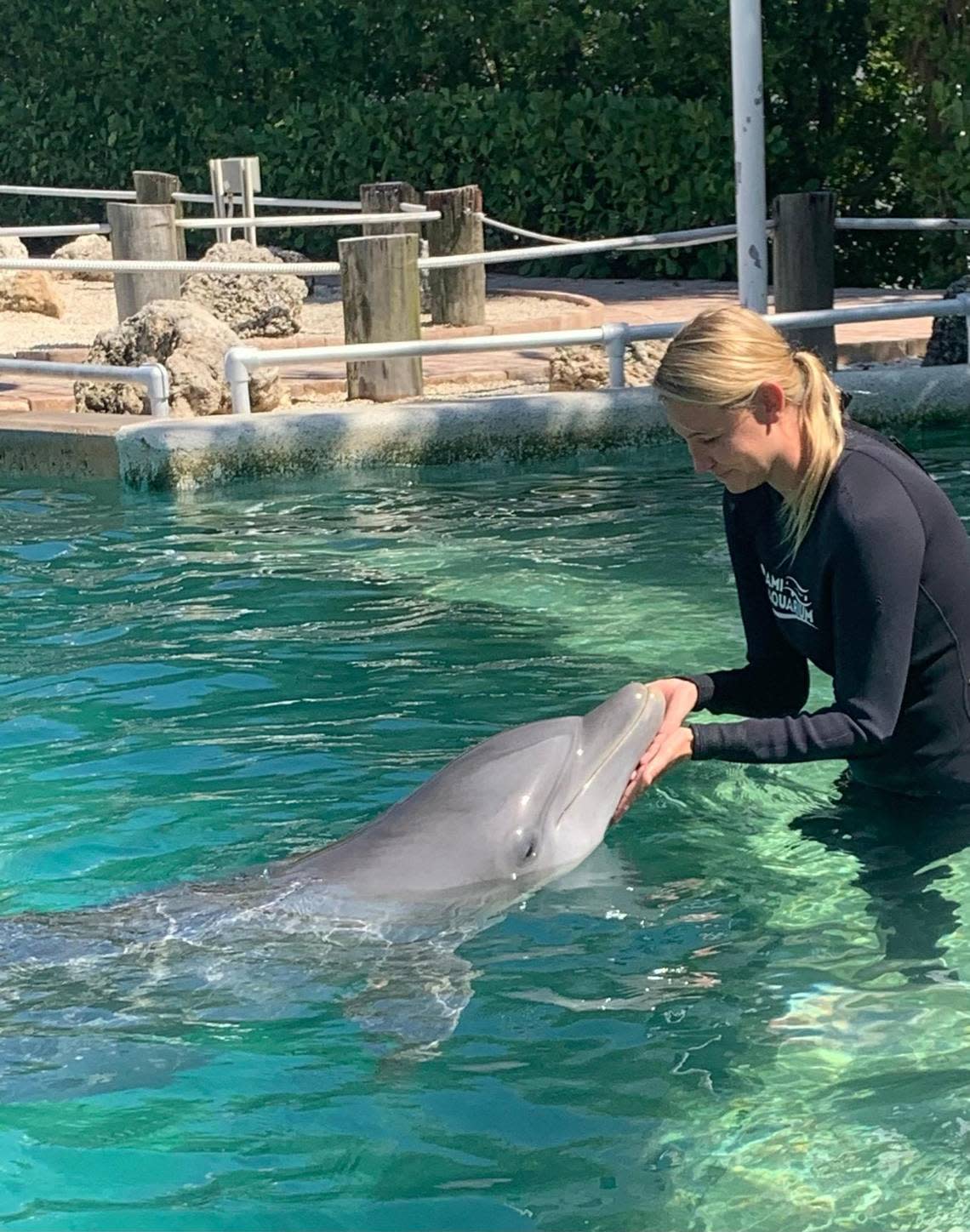
“We monitored her diet, calories and hydration very carefully,” Rodriguez said. “She was managed so differently prior to many changes in 2021. I feel sad she had to go out being fed so low, and her chlorine and temperature were not managed to be optimal like before.”
Rodriguez recommended that Toki retire two years ago. She told commissioners for Miami-Dade County, which leases its land to Seaquarium, of her concerns. Toki had injured her jaw on a jump. Her shows were too strenuous. She was getting old.
Seaquarium officials have said she had been receiving top care until the end.
Prior to her death, Toki was “eating well, up to 115 pounds of salmon, herring, capelin and squid each day,” the Seaquarium said, and Reidarson told the Herald ”she’s actually really healthy right now.”
“All of her parameters are near normal,” Reidarson said on the Friends of Toki website in July. “Her blood work continues to be stable and look nice. And she is in as good of a clinical condition as I’ve ever seen her.”
On Aug. 15, three days before her death, Eduardo Albor, CEO of The Dolphin Company, said in a Seaquarium update that the orca was “in the best health condition on record for years.” The update said that a $500,000 upgrade to Toki’s tank — including “new chillers, filter media, an ozone generator to replace chlorine and numerous regulators and pumps” — was helping keep her in good condition.
Rodriguez disagreed with the assessments of Reidarson and Albor.
“She was not healthy,” Rodriguez said. “She was hungry.”
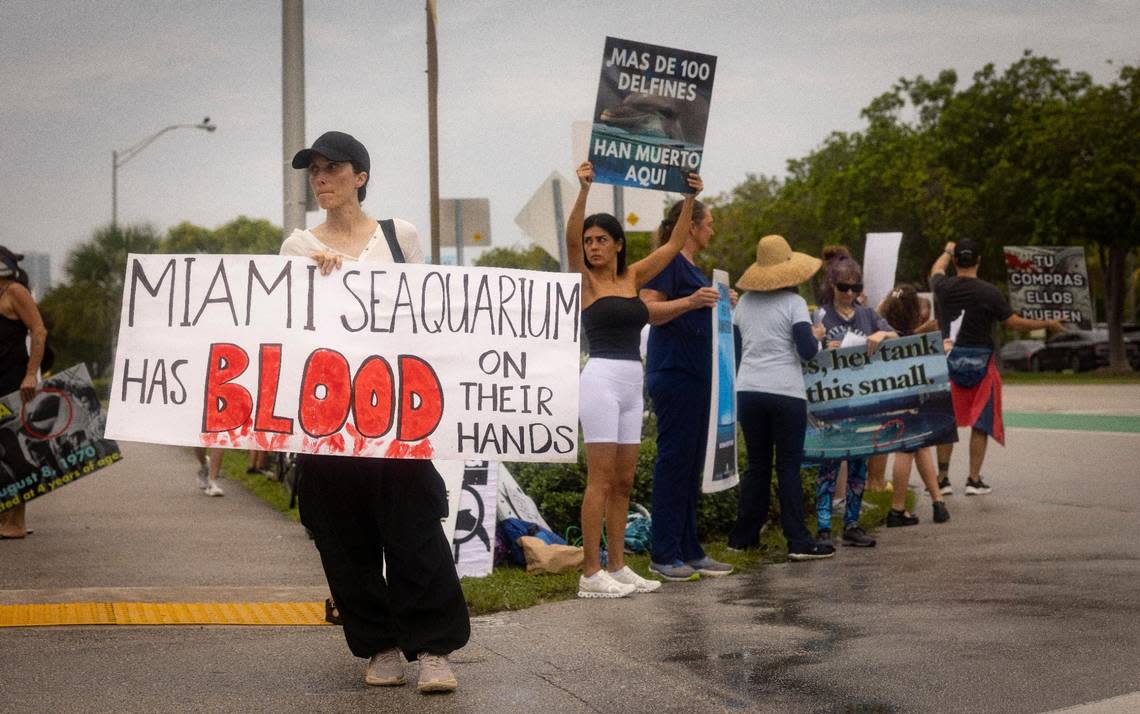
The update said Toki’s “interactive time with trainers includes swimming laps, toy play and ... soliciting attention from her trainers....”
But Wallace said a video posted that day praising Toki’s “fast swims” was, in her view, abnormal behavior and evidence of Toki’s discomfort.
“They misinterpreted her behavior and could have missed early indicators of her distress,” Wallace said. “They were unfamiliar with Toki and didn’t reach out to those who were.”
Wood said meticulous care of Toki was a source of pride for her trainers, who did their best to compensate for her cramped habitat.
“Toki had only one health scare in the entire time I worked there — a tooth infection, which we caught immediately and fixed with a root canal,” Wood said. “After I left they hired a new curator from SeaWorld who changed everything we had done with Toki for decades to what they did at SeaWorld. Since then, she’s been a sick whale.”
Wallace and Rodriguez also criticized Reidarson for adhering too strictly to body blubber index tables.
“That was an excuse for cutting food,” Rodriguez said. “To start with, Toki was very large for a female.”
USDA concerns about dolphin feeding
It’s not the first time Seaquarium animals have been the subject of questionable feeding practices. A July 6, 2022, USDA inspection report stated that dolphins’ diets were cut by as much as 60 percent to induce them to perform better during interactive sessions at Dolphin Harbor, where a 30-minute “Dolphin Encounter” costs $159 for guests age 10 and over, including admission.
Inspectors described “very thin dolphins” with protruding ribs who were asked to do as many as 67 guest interactions per day, and reacted by ramming trainers, biting guests and dropping out of show routines.
The food reductions were implemented in March 2022, when The Dolphin Company replaced Palace Entertainment as the Seaquarium owner and decided the animals were too fat.
“We acquired the property in March and our team determined we had nine overweight dolphins,” said Seaquarium’s general manager at the time, Patrick Pearson, when the USDA report was released. “We would never cut a diet to induce behavior.”
The USDA had only agreed to grant an operating license to The Dolphin Company if it closed the Whale Bowl, which meant Seaquarium’s star would no longer have an audience. The Dolphin Company waived an exhibition permit for Toki, then announced that she would be retired.
Although The Dolphin Company has made improvements at Seaquarium, including computerized monitoring of water quality, the tank and bowl still haven’t been repaired. In April, Miami-Dade County’s Unsafe Structures Board gave Seaquarium a deadline extension to Aug. 17. Toki died Aug. 18.
Wood and Heather Keenan, a former Seaquarium head trainer who worked with Toki for 18 years, created Truth4Toki to push for her to be moved to Orlando’s SeaWorld instead of a risky move to Puget Sound.
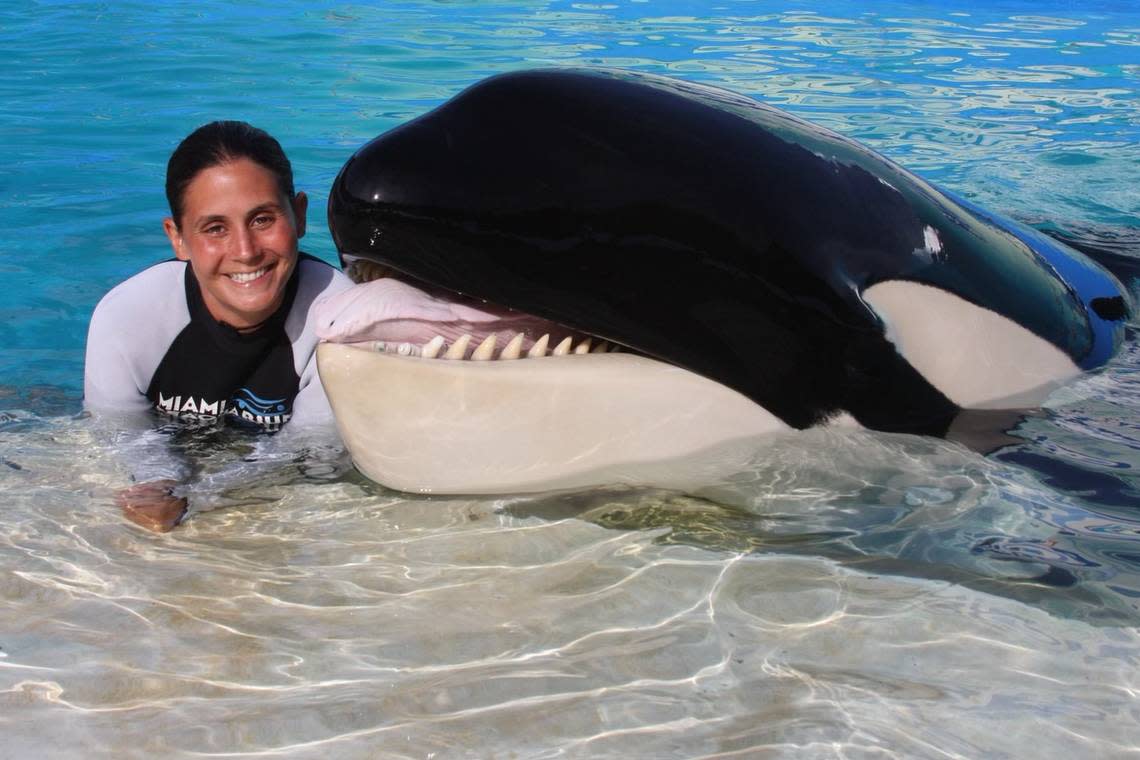
“We never felt she was a candidate for a long, radical move,” Wood said. “She was a geriatric female. She was immunocompromised by being on a variety of medications and supplements for years. She was on a heavy antibiotic for her lungs. She was not the healthy, spry killer whale that the Friends of Toki would have you believe.”
The ex-trainers and vets questioned the practicality of the plan, the motivation behind it and the track record of its proponents.
Singh and the Friends of Toki were working with Charles Vinick, executive director of the Whale Sanctuary Project, on a $15-20 million plan to move and sustain Toki in the Pacific Northwest sea pen. Billionaire Indianapolis Colts owner Jim Irsay contributed about $5 million to the effort and pledged to give more.
Vinick had been raising money for years to move Kiska, Canada’s last captive orca, from Marineland near Niagara Falls to a 100-acre sea pen enclosed by nets in Nova Scotia. Reidarson was Kiska’s attending vet who was preparing her for the oft-delayed move. But Kiska, 47, died from a bacterial infection on March 9.
Vinick was director of the endeavor to free Keiko (of “Free Willy” fame) from a Mexican marine park to the orca’s native waters in Iceland. After four years in Iceland with his caregivers attending to him, Keiko followed a pod to Norway. But he never integrated with the pod and remained reliant on his caregivers. He died a year later of pneumonia at age 27.
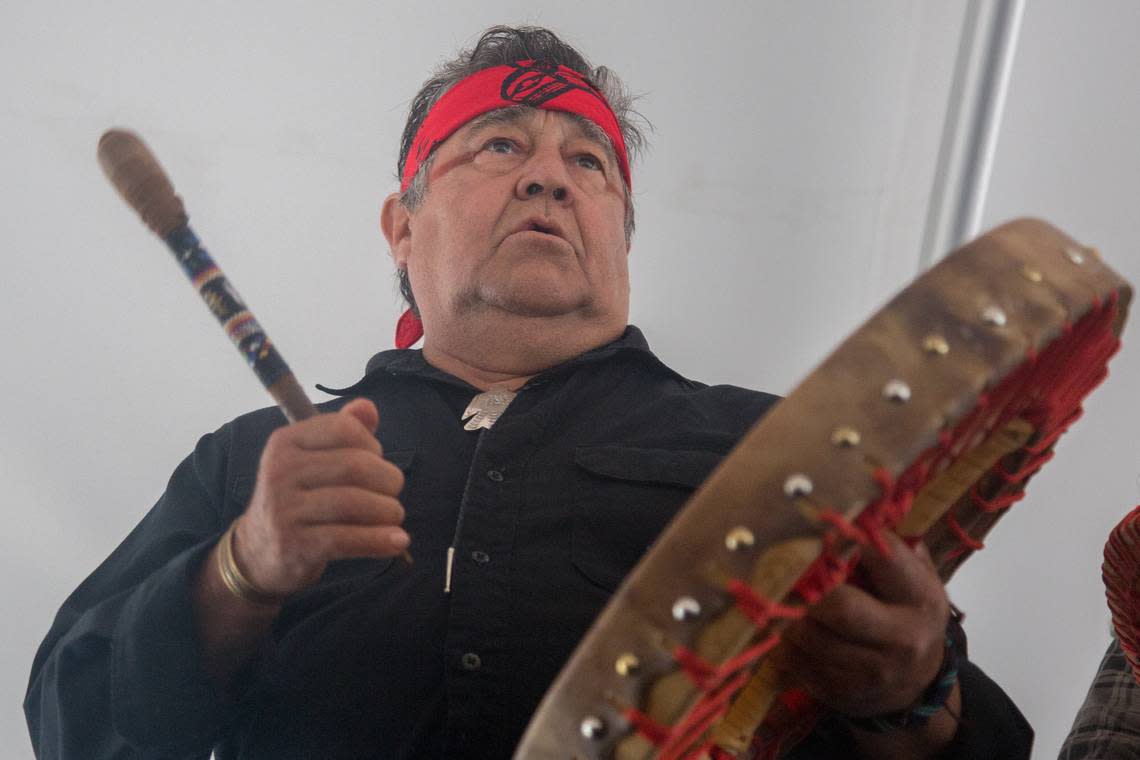
“There was never any intention to put Toki back in the ocean,” Wood said. “They knew the various permits would never be approved. Where was the actual site? How would they build it? How would she receive hands-on medical treatment? But they wanted to look like heroes so nobody looked bad when she died. Did all involved parties have Toki’s best interests at heart? Or did they just want to feel proud of themselves?
“They knew moving her to another facility would not have generated the same amount of drama and money. But there was no way it was going to end with Toki swimming off with her pod into the sunset.”
Wallace predicted Toki’s death would lead to a harsher backlash against marine parks. The People for the Ethical Treatment of Animals (PETA) has called for people to stop patronizing what they call “abusement parks.”

“Part of Toki’s legacy will be the downfall of the industry,” Wallace said. “Many questions must be answered. There must be a review of the necropsy results.”
About 60 orcas remain in captivity around the world. Lolita, or Toki, is no longer on that list.
“I’m angry at the people who put their egos above the health of a gentle, highly intelligent animal,” Wallace said. “Hopefully, Toki is teaching us to learn from our mistakes.”
